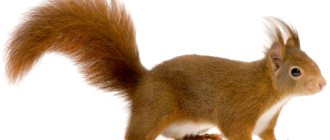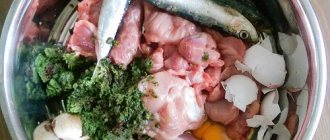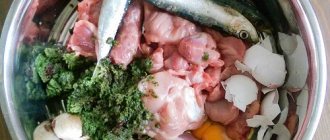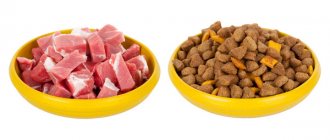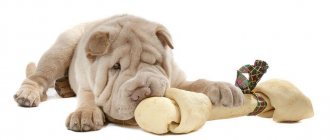Today, more and more people choose a hedgehog as a pet. In recent years, it has become possible to purchase specially bred hedgehogs of various breeds. In this case, you can find out in detail from the breeder what to feed the African hedgehog at home. But many people pick up cute animals while walking in nature. They have a question about what to feed the forest hedgehog at home. This article will talk about this in detail.
What do hedgehogs eat in the wild?
To understand what to feed a small hedgehog that comes into your home, you need to know well what hedgehogs eat in the wild. Thanks to children's fairy tales and cartoons, many people mistakenly believe that hedgehogs eat mainly mushrooms, apples and milk.
The hedgehog is an omnivore, but its main food is various insects: beetles and their larvae, snails, slugs, caterpillars, earthworms. In addition, reptiles and amphibians, baby mice and rats become food. Hedgehogs destroy bird nests on the ground. The diet is supplemented with various berries and fruits.
What to feed a small hedgehog at home? Fortunately, hedgehogs are not picky about food; the main thing is to choose the most suitable and healthy diet.
Feeding pets
Proper nutrition for a hedgehog is the key to its health. Therefore, you need to be especially careful about what to feed your pet at home, and the diet of a small and an adult animal is very different.
Small
If you have to feed a very tiny animal, a pipette will come to the rescue. Every 2-3 hours you need to give him boiled milk diluted with water (2:1). Baby formula is also good, and it should be freshly prepared and heated to 30-40 ° C. Immediately after eating, you need to massage his tummy from top to bottom to improve digestion.
At 3-4 weeks, you need to start adding milk porridge, lean meat minced through a meat grinder, and a hard-boiled egg to your diet. By the time the hedgehog’s weight reaches 250-300 g, dairy products are completely removed.
Adult
Speaking about what adult hedgehogs eat at home, it should be noted that the main component of their diet is animal fats. In the natural environment, they readily eat beetles, worms, caterpillars, snails, mice, lizards, and frogs. At home, these components can be replaced with purchased bloodworms or other purchased insects. Also, the menu must include lean meat and fish (both raw and boiled), because they fill the body with essential vitamins.
Liver is another product that hedgehogs enjoy eating at home. It needs to be boiled and cut into small pieces.
The animals like milk, but it can be given extremely rarely and only in the form of white bread soaked in it.
Important! Milk has a negative effect on hedgehogs because it is not absorbed by their bodies.
It is good to add a small amount of vegetables and fruits to your diet. Occasionally you can give freshly squeezed juice.
If your pet has a lack of vitamins, you can prepare a mixture of raw carrots and egg powder.
An adult hedgehog weighing 800-1000 g should be fed 50 g twice a day.
What to feed a hedgehog at home
Premium or super-premium dry cat food can be used as the main food for hedgehogs. Carefully study the composition - meat and vegetables must be in the first positions, but starch-containing products (such as potatoes and corn, for example) should not be at all. There is no food that is completely suitable for hedgehogs and can satisfy all their needs, so dry food must be supplemented with meat, insects, and vegetables.
So, answering the question “what to feed a hedgehog at home,” we can say that you need to use either dry food with additives or natural food. Let's take a closer look at the products needed by hedgehogs.
Prohibited Products
Although the prickly animal is omnivorous, some food can seriously harm it!
- You should not feed hedgehogs any kind of sweets (chocolate, candies), as such treats often lead to diabetes.
- Dried fruits and fruits with seeds are dangerous for the animal - their bones often get stuck in the animal's throat.
- Any fast food, dry food for dogs or cats, products with thickeners, rolls, chips, crackers, onions or garlic are strictly prohibited.
- Food from the human table is also not suitable for hedgehogs.
A strong misconception is the public opinion about the benefits of milk for hedgehogs.
Attention! Cow's milk should not be given to a hedgehog; it leads to health problems.
The exception is small hedgehogs - they drink milk, but not cow's, but goat's.
Potentially inedible products are also dangerous for pets. Hedgehogs love to chew plastic. This should not be allowed due to the risk of poisoning and death of the hedgehog.
Also, animals sometimes bite live wires and die.
What kind of meat should I give my hedgehog?
Meat is the first thing you can feed your hedgehog at home. It is better to use lean meat - chicken, turkey, duck, veal, rabbit. The question remains: in what form should the meat be given - boiled or raw? The fact is that hedgehogs eat raw meat much more readily than cooked meat, this is especially true for recently caught hedgehogs.
Raw meat is rich in microelements and is healthier than cooked meat, but it can contain parasites and pathogenic microorganisms. It is unacceptable to feed rodent meat and wild animal meat without heat treatment. If you want to please your hedgehog with raw meat, choose veal.
Various by-products can also be used as feed: liver, lungs, heart, stomach, tongue. Boiled liver is a favorite delicacy of hedgehogs.
The meat is boiled or steamed without salt and spices. There is no need to cook meat for a long time to disinfect it – a few minutes will be enough for small pieces.
Basic colors
For home keeping, select healthy hedgehogs that have been examined by a veterinarian. The color of the shell matters. Breeders bred dwarf animals of colored color. It may differ from the shade of the needles of the individuals that are the progenitors:
- White-bellied - white fur. The color of the needles is gray with light rings. The ears are small;
- Algerian - cream and light beige needles. The auricle is large;
- Salt and pepper – black mask. The nose and eyes are dark. The fur on the forehead, over the eyes and on the belly is white. The carapace is black with white spots;
- Gray – the mask is light brown, covers the cheeks, but does not go into the eyes. The rest of the fur is white. The needles are dark gray with white ends;
- Chocolate – dark eyes and nose, light brown mask. The skin has a pinkish tint. Color dark brown with white;
- Brown is the color of oak bark. The ends of the needles are light. The fur is white, the mask is beige;
- Cinnamon - all needles are colored light brown. The skin is pink. The mask does not appear;
- Tsinakot - 50% of the shell is colored light brown and 50% white. Colored and light-colored needles are arranged randomly. The skin is beige, the eyes and nose are dark. There is no mask;
- Shampoo – light beige color, red eyes, dark nose;
- Pinto - the shell on the head and neck is light brown. The spines on the back and sides are white.
African hedgehogs kept at home can have a combination of colors. Pinto is combined with another color, tsinacott, chocolate. There are albino hedgehogs or white ones with a dark mask.
Of the light colors, the most popular are Snowflake and White. Breeders are experimenting with the shade of the shell. White animals with black yokes on the crown of the head or black animals with a white forelock appear.
Should I give my hedgehog fish?
Is it necessary to give a hedgehog fish, since it does not eat it in nature? The hedgehog will happily eat some fish. For feeding, you can use trash fish or waste, tripe. You should not feed hedgehogs salted or lightly salted fish, as well as stale or rotten fish. This may cause poisoning.
Fish can be used as a treat and a healthy addition to the main diet, but not as a main food. Eating large amounts of hake, pollock, and haddock can cause anemia. Eating large quantities of pike, bream, whitefish, carp, tench, crucian carp, and perch can lead to vitamin deficiency.
It is best to use mackerel and horse mackerel as food. The meat of these fish is comparable in properties and effect on the hedgehog’s body to the meat of farm animals. Fish is also boiled or steamed without salt and spices.
Breeding
Breeding African pygmy hedgehogs is a very important step. Initially, carefully weigh the pros and cons. You should have enough free time to care for your pregnant hedgehog and babies.
How to determine gender
To determine the sex, hold the hedgehog in your arms so that its belly is visible. In females, the genitals are located next to the anus. In males, they are located at a distance of approximately 1 cm from the anus in babies and 2–2.5 cm in adults.
Mating
For mating to be successful, the hedgehogs must be in the same age category
Hedgehogs become sexually mature at 5.5–6 weeks. Animals should not have inbreeding until at least the 3rd generation, so babies must be separated by gender in advance. Weak and sick hedgehogs cannot be bred.
A young male cannot be mated with an adult female. Due to inexperience, he can cause aggression and be bitten as a result. Mating can be done at 5.5–6 weeks, not earlier.
A female can become pregnant before 5.5 weeks. This cannot be allowed. She may not bear offspring or refuse to feed the cubs. A female should not be allowed to mate for more than 11 weeks if she has never given birth. Fused pelvic bones can complicate childbirth and lead to the death of a hedgehog.
Mating takes 6–7 days. There is no point in keeping animals together any longer. If mating does not occur, place the hedgehogs for a week, and then connect them again.
Males can be bred every 2 weeks. Female - no more than 2 times a year. Otherwise, she will kill her hedgehogs.
Pregnancy
Pregnancy in hedgehogs lasts 34–36 days. In a couple of weeks, the female gains 10–50 g in weight. On the 25th day, it is already clear that the hedgehog is pregnant: she becomes rounder, and her behavior also changes. She begins to take care of herself, her gait slows down.
How to care for newborn hedgehogs
It is better to touch newborn hedgehogs only with a cloth.
In the first days of the babies' lives, the female behaves very nervously. She needs to be placed in a separate cage and ensure complete rest. Otherwise, she may refuse to feed the offspring or even kill them.
It is better not to touch small hedgehogs - the female may refuse them if she smells a person. But sometimes situations arise when holding a baby is simply necessary. In this case, wash your hands thoroughly with plain water, put on clean clothes and try to avoid any odors. When you pick up the baby, distract the female. The same must be done when you put it back.
For the first 2 weeks, hedgehogs eat only mother's milk, then she begins to bring them other food. By 2 months, hedgehogs are no longer completely dependent on their mother.
How to breed insects
What to feed a small hedgehog at home? If you plan to leave the hedgehog for a long time, you can take care of the constant presence of insects. At home, you can breed large mealworm larvae.
To do this, take a small tightly knit wooden chest (it is better to cover the inside of a wooden box with foil) or a plastic container. A small hole is made in the upper part for air access, tightly covered with a fine mesh.
Bran is poured into the box in several layers, separated by natural fabric or gauze. Now the mealworm larvae are placed in the container. They can be purchased at a pet store or market. The box is placed in a warm place. Mealworms develop into pupae and later into beetles. The bugs again lay eggs, from which worms emerge. Some of the worms are left for further reproduction. Bran is periodically added. Other insects can be bred in a similar way.
Price
You can buy a prickly animal at a pet store or nursery. The price of a hedgehog depends on a number of factors, including the type of animal, age, and color. The most affordable common hedgehogs start from 3,000 rubles. Exotic African hedgehogs can cost 12-15 thousand rubles.
When purchasing, it is important to purchase a healthy pet with clear eyes, without sagging skin, spots, or bumps on the skin. The baby's nose should be dry, without crusts. A sign of a sick hedgehog is “staggering syndrome” when walking.
Individuals with a characteristic gait usually have several diseases. The tummy of a healthy pet is evenly covered with fur, without bald spots or tangles. The acquisition of a prickly friend will definitely bring bright colors to the usual home life of any person.
How to catch and store insects
Not everyone wants to have a box infested with insects in their home. In summer, they can be caught and collected in nature. Almost any insects will do: flies, beetles (hedgehogs are especially fond of cockchafers), grasshoppers and locusts, as well as larvae of any insects and worms. Flying insects can be collected in a light trap. May beetles are collected from trees.
Caught insects can be stored. First, the closed jar is immersed in a pan of hot water. When all the insects are dead, they are dried in the sun. Now the food can be crushed and stored in a glass jar with a tight lid.
The kitchen is not for the faint of heart
It is worth noting that the menu for hedgehogs at home is a very bloodthirsty thing and not for squeamish people. His diet should consist of the following products (the list is in descending order):
Raw meat
These are chicken, veal, horse meat, lamb. It is strictly forbidden to give pork! Everything else can be given in the form of small pieces or ground into minced meat. This category also includes mice (adults and children), frogs, snails, and slugs. Some owners are afraid of infecting their pet with worms, so they always boil the meat. I wonder if they boil mice and frogs too? Still, it is preferable to give your hedgehog raw foods, but purchase them from trusted places.
Secret. Many sources strictly prohibit feeding domestic hedgehogs with flavored meat. It’s strange, but in nature these cuties are also scavengers. Dead chicks or small animals are gobbled up by both cheeks.
Insects
Larvae, pupae, worms, adult insects. Just in huge quantities! You will have to catch beetles, locusts, grasshoppers, moths, lacewings, beetles, and so on and so forth. Then you will have to kill all this goodness somehow.
Advice. Do not give domestic cockroaches to hedgehogs!
Experienced hedgehog breeders advise stuffing the insects into a glass jar, closing it with a screw cap and... baking it in the oven. After this, you need to thoroughly dry the cold insect corpses. They need to be stored in the same glass jar with a tight lid.
Important! Why all these tricks? So that during the meal the insects simply do not run away. Plus, in the fall, where will you get such a treat for your hedgehog? What if he doesn't go into hibernation? This is where such supplies come in handy.
Did you know that one adult hedgehog can easily eat up to 70 cockchafers per day? And besides that, he eats.
Vegetables
Basically it's just regular raw carrots. This is what hedgehogs prefer to other vegetables. According to the experience of the owners, prickly pets eat carrots better if they are rubbed. Sly people usually ignore large pieces. Vegetables can be replaced with a small amount of apple or pear. It is also advisable to chop them. By the way, what stops you from experimenting? Try giving your pet pieces of other vegetables or fruits. What if he turns out to have a great sweet tooth and will be happy to eat such a delicacy?
These three groups are the main component of the entire diet of hedgehogs at home. But the same type of diet can result in a lack of vitamins and microelements. Accordingly, this will negatively affect the health of the prickly grumbler.
Ready-made insect food
Previously, hedgehog lovers had to prepare insects for the winter, dry and grind them, and then store them in jars. Of course, this can be done today, but there is an easier way.
Many pet stores sell food for insectivorous birds, reptiles, hedgehogs and sugar gliders. Be careful - there are foods made from cereals for insectivorous birds that imitate insects with the help of flavorings. Look at the composition and choose food containing insects. The choice in online stores is especially rich: mixtures of dried insects of several types, wet insect food in jars, and even canned insects. Dry food can be mixed with chicken or quail eggs, or minced meat can be added to this mixture. Wet and canned food is ready to eat.
Vegetables fruits
In nature, hedgehogs do not refuse plant foods. In order for your prickly pet to receive all the necessary vitamins and microelements, he must be offered plant foods. What to feed a hedgehog at home? What plant food can I offer him?
First of all, a hedgehog will appreciate sweet fruits. You can treat him to apple, pear, apricot, peach, watermelon, kiwi, banana, melon, papaya. The pet will not refuse the usual forest berries: cranberries, blueberries, blueberries, raspberries. Eats garden strawberries, wild strawberries, and cherries (without pits).
The animal will also like vegetables: carrots, cucumber, zucchini, spinach, asparagus, green beans, peas.
Fresh vegetables can be replaced with baby purees in jars. The composition should not contain starch or sugar.
How does a domestic hedgehog get along with other pets: compatibility, tips
It should be noted right away that the ideal neighbor of a domestic hedgehog is a human . Prickly living creatures do not require more extensive company. A fairly common mistake made by many inexperienced hedgehog owners is thinking that they will be lonely.
But if a neighborhood is inevitable, it’s definitely worth finding out how a domestic hedgehog gets along with other animals:
- With another hedgehog, it will be an eternal battle for survival. Bites, scratches and the subsequent surrender of the loser are its indispensable condition. Therefore, if you really want to have two representatives of such living creatures, then you should take care of individual cells. The only exception is children or individuals of different sexes.
IMPORTANT: But in the latter case, you should also be careful. Hedgehogs begin to reproduce early, but early activity in this regard can cost them their health.
- With a cat - in nature, a cat does not hunt a hedgehog, so nothing threatens the prickly pet. Except for the cat’s curiosity, which, however, quickly disappears after a paw collides with a thorn. But the presence of the owner nearby during the acquaintance is desirable.
A domestic hedgehog can easily get along with a cat
- With a dog everything is more complicated. More precisely, with those dogs that have hunting instincts. Or with especially zealous ones who will begin to bark at the hedgehog, intending to drive it away from the person. But you can try to place a hedgehog with other dogs.
- Hedgehogs do not cross paths with birds . However, some parrots may show curiosity. But, as in the case of cats, the thorns instantly dampen the explorer’s ardor.
- The hedgehog also gets along well with rats . But it is preferable to allocate separate spaces for them.
IMPORTANT: The information that hedgehogs hunt rats is a myth. The reality is that rats move many times faster than hedgehogs.
Can hedgehogs have milk and eggs?
When people think about what to feed wild hedgehogs at home, most people think of apples and milk. Indeed, in old recommendations you can find advice to feed the hedgehog cottage cheese, cereals with milk, and offer cow's milk as a drink. But modern zoologists are unanimous - you should not give milk to adult hedgehogs, they do not tolerate it well.
But hedgehogs eat eggs in nature, and if an animal comes across a bird’s nest on the ground, it will definitely feast on it. Eggs can be offered both chicken and quail, raw and boiled.
Where live
The habitat is wide, because hedgehogs are found in many European countries. They also live in Russia, and they can also be seen in hot Africa, New Zealand, the East and Asia.
Hedgehogs prefer to settle in steppes, deserts, cultivated landscapes, and forests. It is noteworthy that they can be found even in cities.
Hedgehogs have elongated middle fingers, which make it easy to clean their needles. The spines are hollow, and sparse hairs grow between them, which are almost invisible. The belly and head are covered with hair. On average, a hedgehog has approximately 10 thousand needles, which are updated regularly.
Food from the table
There are people who believe that since a hedgehog is an omnivore, any food is suitable for it. And they don’t have the question “what to feed a hedgehog at home.” Indeed, a hedgehog can eat dairy products, salted meat with spices, various cereals, soups, bread, etc. But it's not right! Do not allow family members to feed the beast from the common table. Salty, spiced, fried and fatty foods are extremely dangerous for the body of a wild animal. Food for the hedgehog is given raw or prepared separately.
Do cartoons lie?
Who is not familiar with the misconception that hedgehogs love mushrooms and apples? They say they carry them on thorns to their burrow, making supplies for the winter. Lies. In winter they need reserves only in the form of their own fat. And apples are only for getting rid of parasites. The sour juice of rotten fruits perfectly cleans the needles of uninvited guests. But that's not what we're talking about now.
All the cuteness of hedgehogs is greatly exaggerated. These are cruel and voracious predators. In nature, they feed on mice, snakes, snails, chicks, frogs, and insects. As you can see, the menu is very varied. Sometimes hedgehogs can feast on fruit carrion, but this is more likely out of desperation. Animals do not eat mushrooms, milk, bread, sausage, or cheese in nature. You should not give them at home either. Moreover, a hedgehog can die from milk. And you definitely shouldn’t give them human dishes.
This is interesting. In order for a hedgehog to live at home for 10 years or more, you will have to create a separate menu for it. It should be varied, nutritious and modest in size. An adult animal requires no more than 250 g of total feed per day.
How can you tell if you're feeding your hedgehog correctly? By weight. An adult hedgehog should weigh at least 800 g in October. A little less in spring and summer. And in winter they don’t weigh it, because the hedgehog sleeps at that time.
What to feed little hedgehogs at home
It is very difficult to feed small hedgehogs on your own. If you find a hedgehog nest in the forest, you should not take the cubs from it; without a mother, they will most likely die. But if the nest is destroyed and the hedgehog dies, you can try to save the cubs. So, what to feed little hedgehogs at home?
To feed babies, you need to purchase formula for feeding newborn kittens or puppies. The temperature in the nest should be maintained at 35'C. Before and after each feeding, massage is necessary to stimulate bowel movements.
Blind hedgehogs (up to two weeks old) are fed every 2-3 hours, 2-3 ml of the mixture. If the eyes have recently opened (age from two to four weeks), the break will be 3-4 hours, and the amount of the mixture will increase to 5-6 ml. Hedgehogs that are one month old have already developed teeth. At this point, they can begin offering solid foods, such as kitten food or a boiled egg.
Brief description of the animal
A hedgehog is an animal that is classified as a hedgehog, a type of chordate. The length of its body may vary, as there are different species of this family. On average, the body size is from 10 to 44 cm. Weight ranges from 300 grams to 1.5 kg. Hedgehogs have a tail that grows up to 21 cm in length, but can be smaller.
The skull is wedge-shaped, while the muzzle is elongated and has a pointed nose. The teeth are sharp, although small in size. There are 20 of them on top, and 16 on the lower jaw. Moreover, some varieties have up to 44 teeth. The front incisors are large and resemble fangs; with their help, animals eat their prey.
Hedgehogs have elongated middle fingers, which make it easy to clean their needles. The spines are hollow, and sparse hairs grow between them, which are almost invisible. The belly and head are covered with hair. On average, a hedgehog has approximately 10 thousand needles, which are updated regularly.
The average lifespan of individuals is 3-5 years. In indoor conditions they can live up to 10 years, because they will not die from their natural enemies. In the natural environment, hedgehogs can be hunted by wolves, ferrets, badgers, hyenas and other forest or steppe predators.
